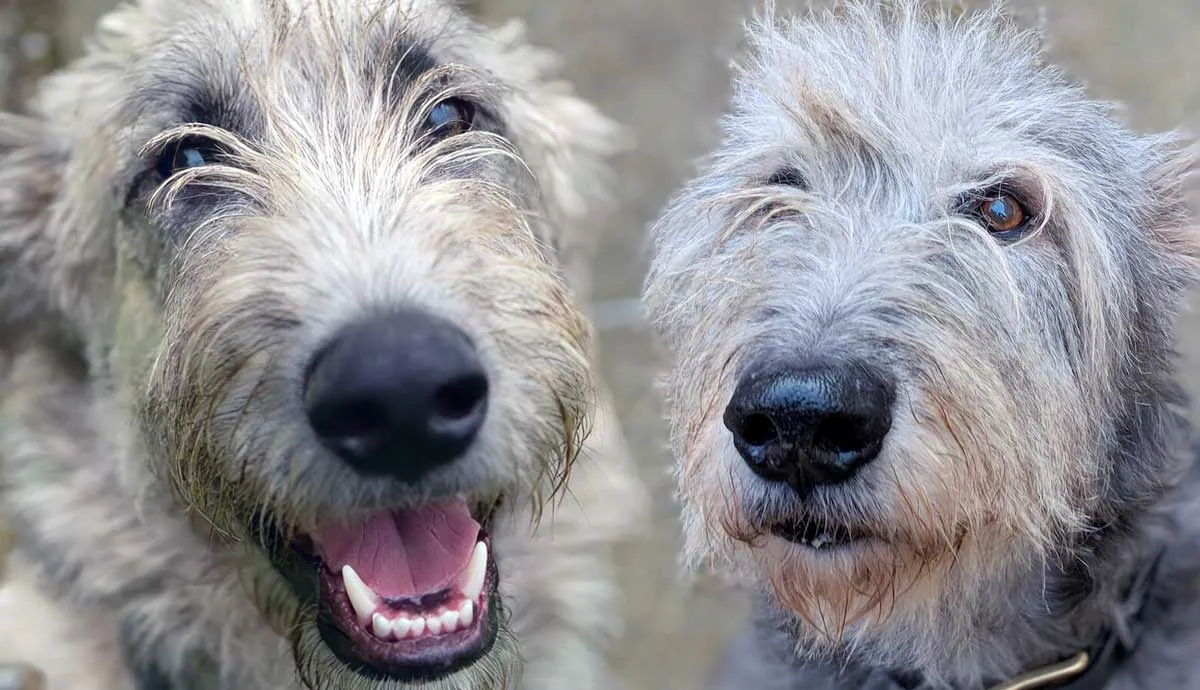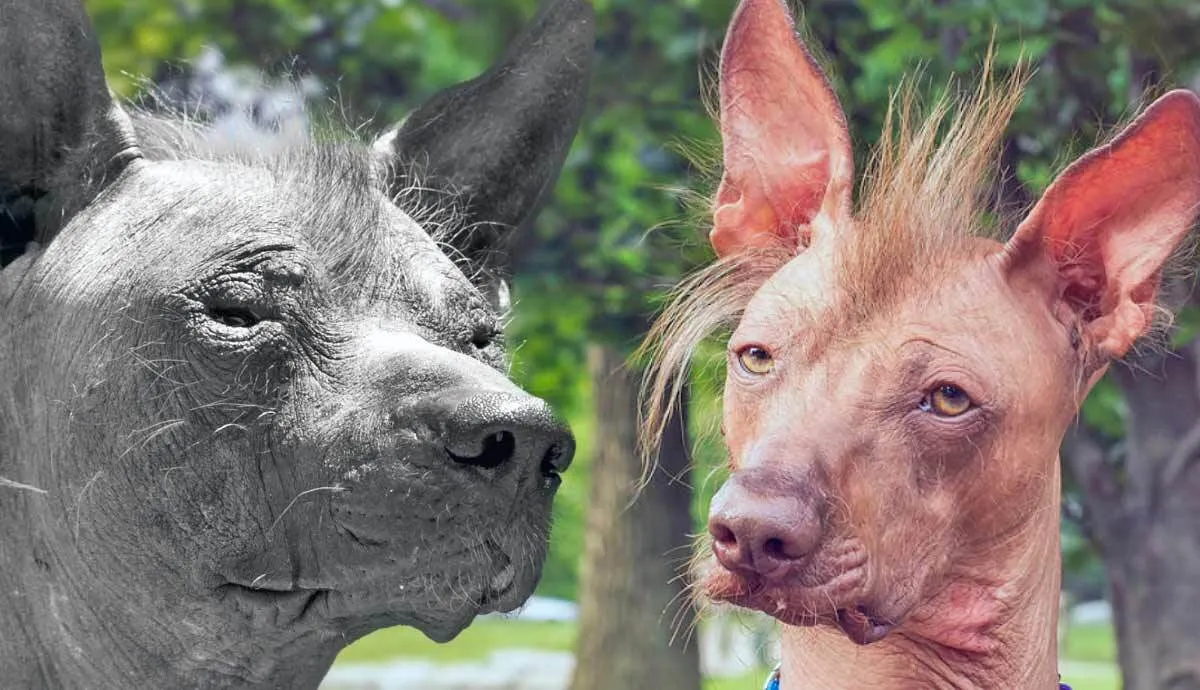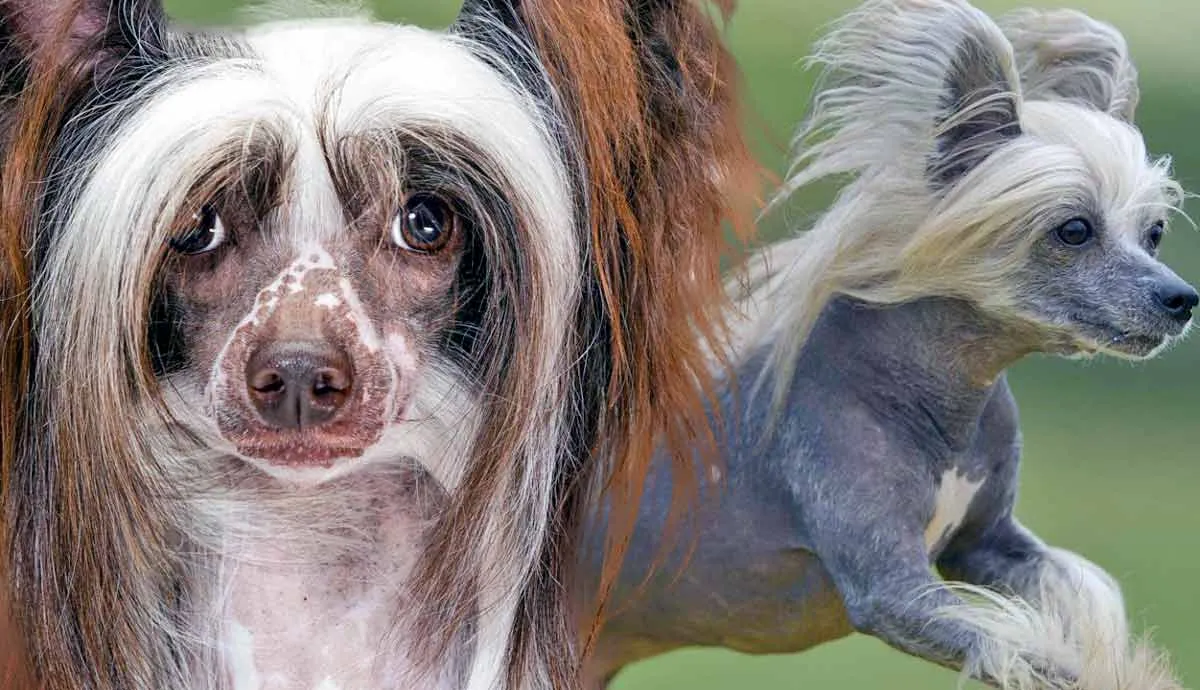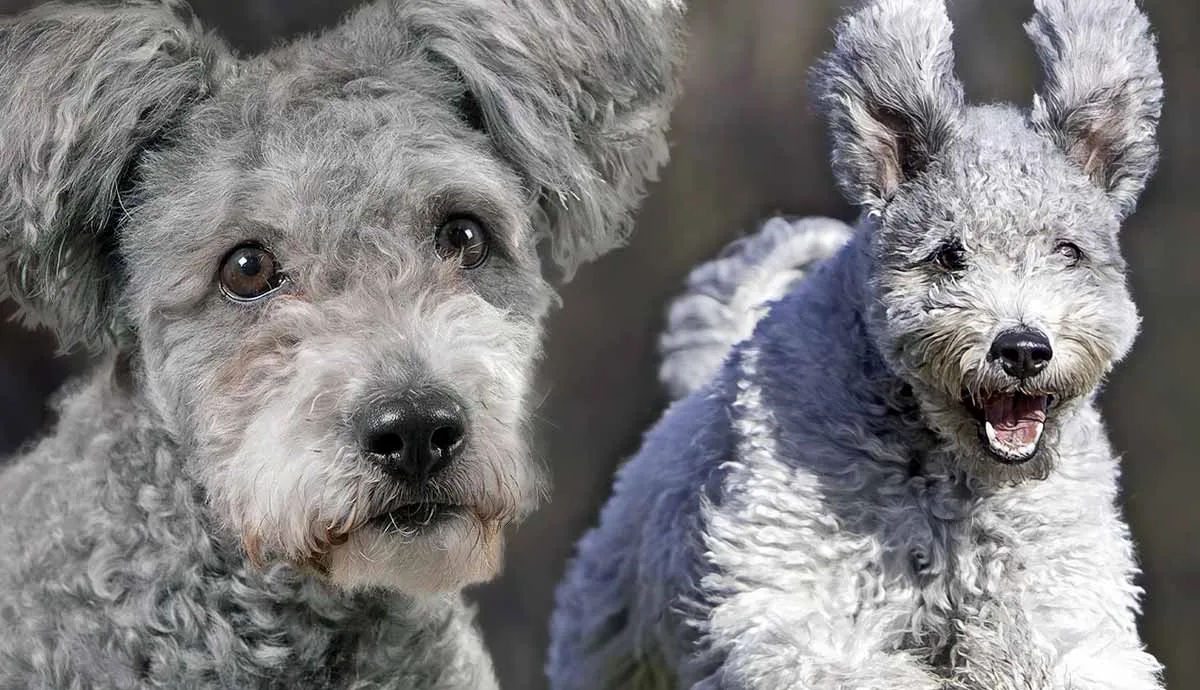Is it a lamb on a leash? Is it a hybrid between a sheep and a terrier? Is it a small dog that got its head stuck in a candy floss machine? No, it’s just the Bedlington Terrier! If ever there was an Englishman in dog form, it would be the Bedlington Terrier. This unique and beloved English breed has been around since the 18th century, and it’s stood the test of time for a reason. Read on to discover everything you need to know about the Bedlington Terrier.
1. Bedlington Terriers Have a Fascinating History
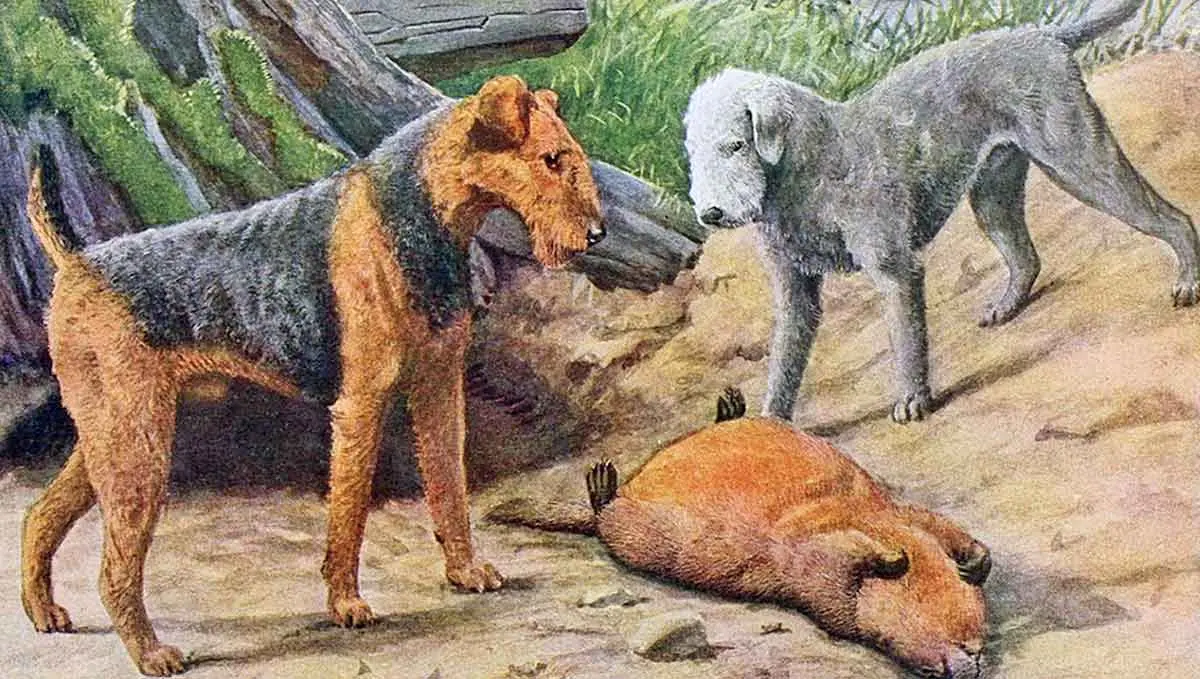
The Bedlington Terrier has a rich history that dates back to the 18th century in a town called Bedlington in Northumberland, England. The breed was developed to be fast and agile, with the intention of hunting vermin. Bedlington Terriers, also known as Rothbury Lambs, were used extensively in mines in their early days. The exact origin of the breed is unknown, although experts believe it is a cross between a Whippet, a Dandie Dinmont, a Kerry Blue, and a Soft-Coated Wheaten Terrier.
Over the years, the Bedlington Terrier became known for its hunting prowess. They were initially used in northern mines for decades but eventually proved useful away from the mines, too, as they became a popular choice for poachers and gypsies. Bedlington Terriers were as brave as they were quick, and so they were excellent at hunting rabbits, otters, badgers, and other small, aggressive animals.
During the 19th century, the Bedlington Terrier gained popularity as a show dog, with its distinctive appearance and unique characteristics making it a favorite among dog enthusiasts. The breed was officially recognized by the Kennel Club of England in 1877, and its popularity spread to other parts of the world quickly. In the early 20th century, the breed was used for hunting and coursing, with its speed and agility making it an excellent choice for these activities. Speaking of…
2. Bedlington Terriers Are Brilliant Athletes

Though their hunting days and use in mines are far behind them, the Bedlington Terrier still enjoys being put to work. Like most other terrier breeds, Bedlington Terriers have high energy levels and are active and athletic. And because of their history with chasing prey, Bedlington Terriers absolutely adore running – and they’re fast!
All of this means that the Bedlington Terrier makes one heck of an animal athlete. Bedlington Terriers are great animal athletes due to their unique combination of physical and mental abilities. They are excellent competitors in dog shows, where they excel in agility and obedience competitions due to their speed, intelligence, and overall agile abilities.
They are also particularly well-suited for competing in Earthdog trials and are often used in dog racing. Their lean, athletic build and powerful legs enable them to navigate complex courses with ease, while their high energy levels and strong prey drive make them naturals at activities like lure coursing and physical endurance tests.
3. The Bedlington Terrier Hails from England
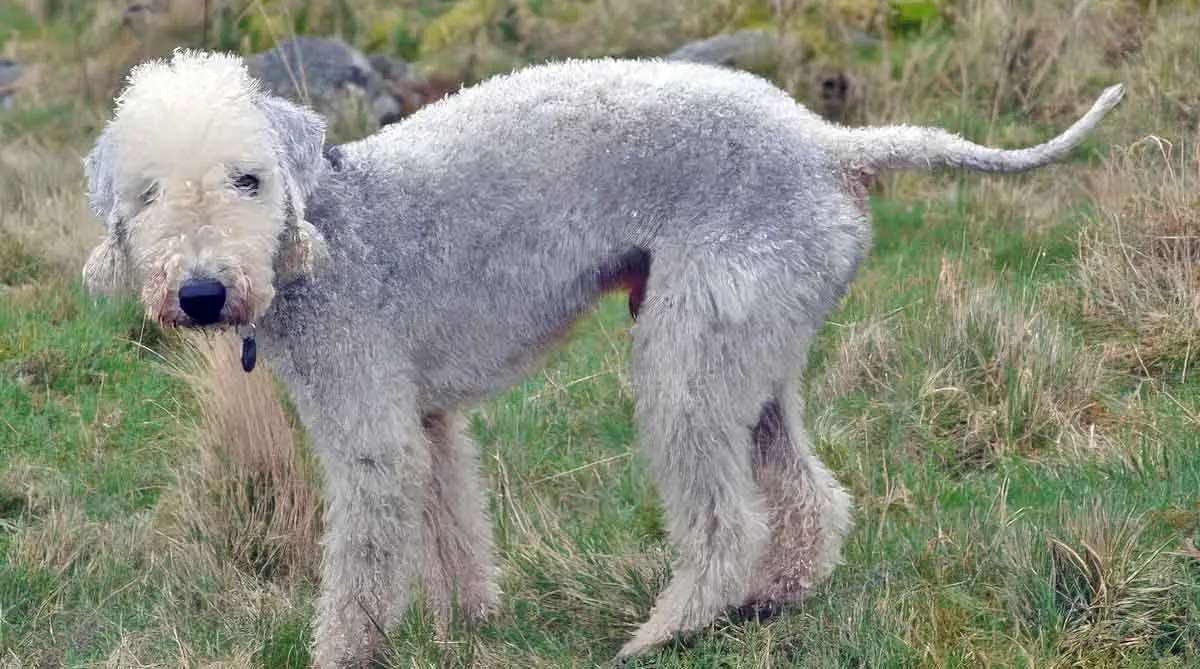
The beloved Bedlington Terrier is just one of the many cherished canine companions to hail from England, a country tied with France for having the most dog breeds. Including the Bedlington Terrier, England is home to a whopping 57 native dog breeds.
They might not have the word “English” in their name as several other dog breeds do, but the Bedlington Terrier is as English as a cup of tea and a plate of fish, chips, and mushy peas. Joining the Bedlington Terrier on the list of British dog breeds are the following breeds:
- Airedale Terriers
- Beagles
- Border Terriers
- Border Collies
- Bulldogs
- Bullmastiffs
- Bull Terriers
- Cavalier King Charles Spaniels
- Clumber Spaniels
- Cocker Spaniels
- Curly-coated Retrievers
- English Foxhounds
- English Pointers
- English Setters
- Golden Retrievers
- Greyhounds
- Lancashire Heeler
- Jack Russel Terriers
- Old English Bulldogs
- Old English Sheepdogs
- Pitbulls
- Springer Spaniels
- Staffordshire Bull Terriers
- Whippets
- Yorkshire Terriers
4. The Bedlington Terrier’s Temperament
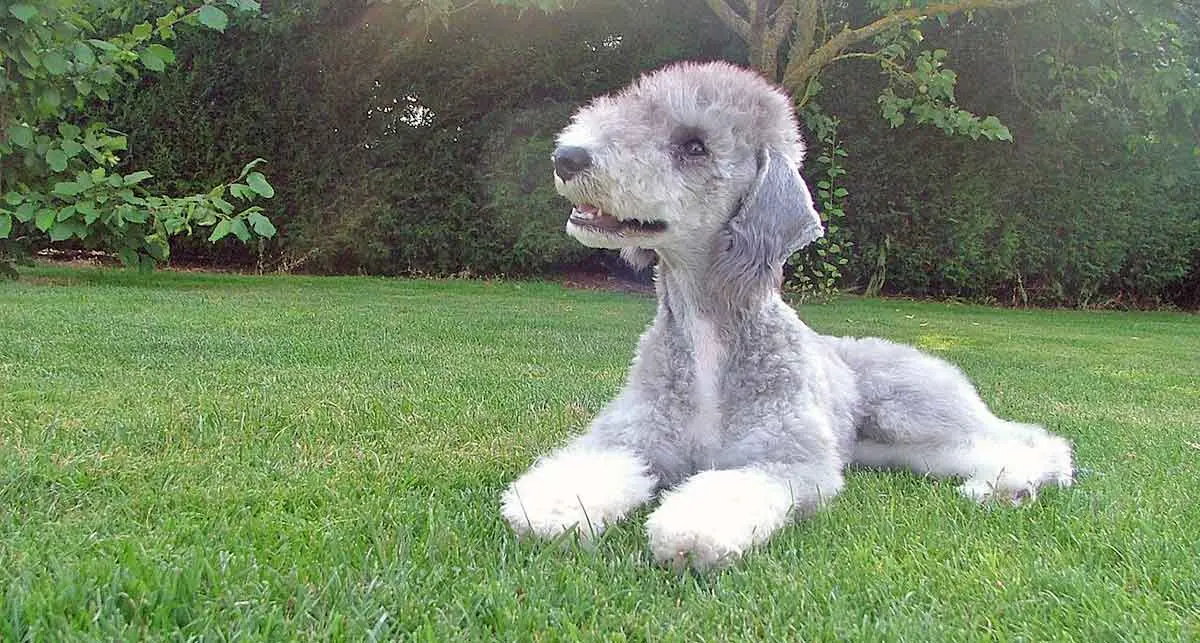
From its unique appearance to its impressive athletic abilities, there’s no denying that the Bedlington Terrier is an incredible physical specimen. But there’s a lot more to this breed than its eye-catching exterior. What’s on the inside is just as impressive, if a little surprising.
Sure, Bedlington Terriers are not the smartest dogs on the block, but they are fairly trainable and very eager to please. They have a lot of other things going for them though, and their temperament is described as:
- Affectionate
- Courageous
- Good-tempered
- Energetic
- Playful
- Plucky
- Protective
- Loyal
- Of average intelligence
All of the traits listed above serve the Bedlington Terrier well. As a result, it is considered to be one of the best dog breeds for families with children and will fit in with most families. One point that must be mentioned is that, because of its history of hunting, Bedlington Terriers will instinctively chase smaller animals like cats, rabbits, hamsters, and the like, so you will need to consider any other pets in the household before adopting.
5. Bedlington Terriers Live for 11 to 16 Years
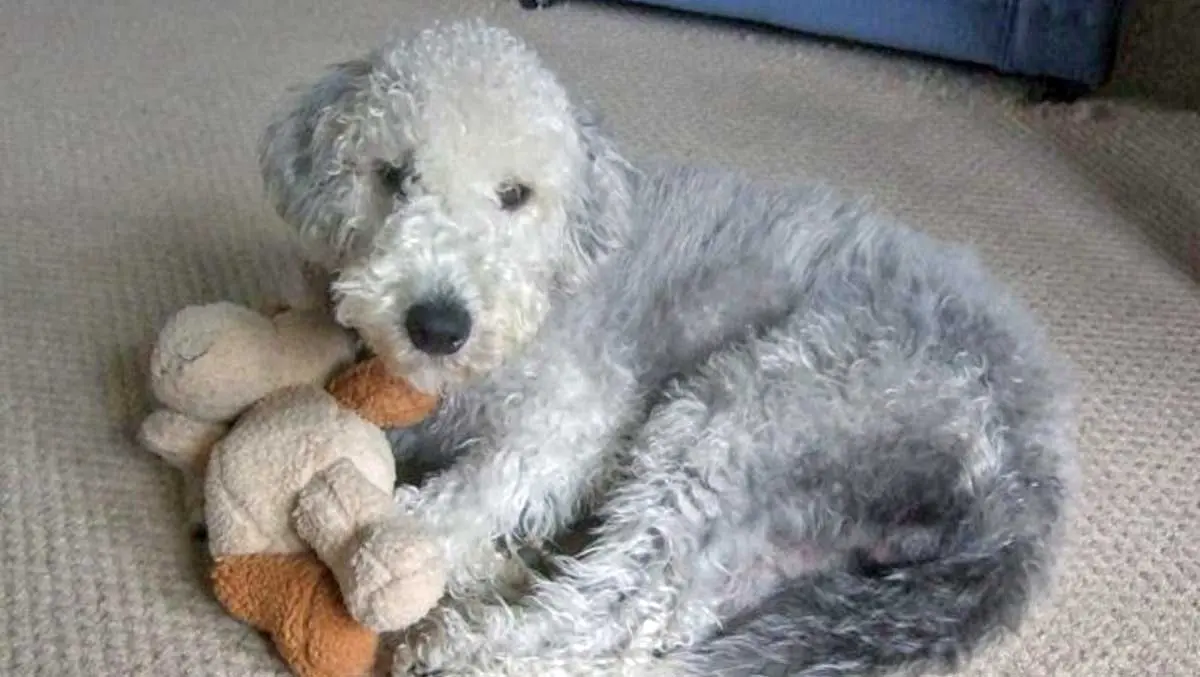
This breed has a life expectancy of 11 to 16 years, with the average Bedlington Terrier living for 13.5 years. This lifespan is normal, if even slightly longer, compared to other small dog breeds, so the chances of a Bedlington Terrier reaching senior dog age are naturally quite high.
According to a study by the British Small Animal Veterinary Association Scientific Committee, the oldest known Bedlington Terrier lived to the ripe old age of 18 years and four months before passing away due to old age, which is the leading cause of death for this breed.
Unfortunately, like all purebred dog breeds, there are a few hereditary health conditions known to affect the Bedlington Terrier. After old age, the main causes of death in Bedlington Terriers are kidney failure, copper toxicosis (more on that down below), and cancer. In addition, Bedlington Terriers are known to suffer from an assortment of eye problems like distichiasis, epiphora, cataracts, and retinal dysplasia. However, other than these specific health conditions, Bedlington Terriers are considered to be a healthy breed – and they have the average lifespan stats to back this up.
6. Copper Toxicosis in Bedlington Terriers
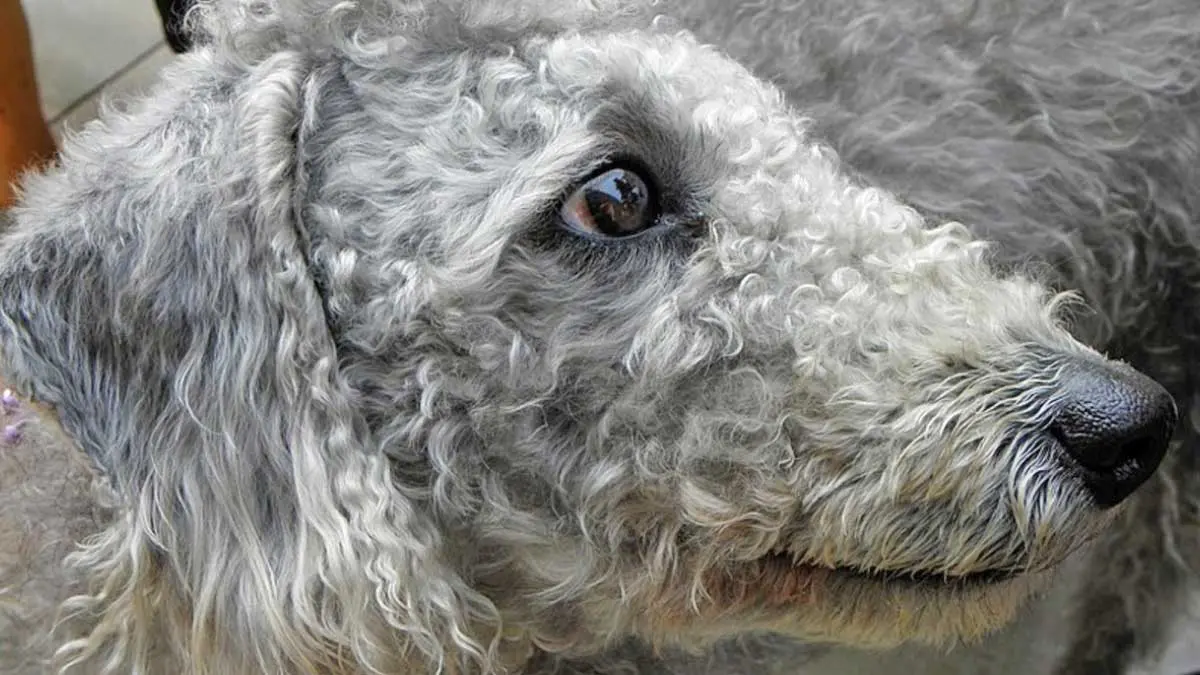
As mentioned above, copper toxicosis is the third main cause of death in Bedlington Terriers. Copper toxicosis, also known as copper overload syndrome or copper storage disease, is a genetic disease that causes unusually high levels of copper to accumulate in the tissue of a dog’s liver. This overabundance of copper in the system is harmful and often fatal. In humans, this disease is known as Wilson’s disease.
Copper toxicosis is found in a handful of dog breeds, including Doberman Pinschers, Keeshonds, West Highland White Terriers, Labrador Retrievers, and Dalmatians, but it is most commonly found in Bedlington Terriers. The reason for this predisposition is unclear.
There are no specific symptoms of copper toxicosis, and it is picked up by blood work alone. However, copper toxicosis causes a range of secondary symptoms that usually result in the need for bloodwork that lead to the diagnosis. These symptoms usually include:
- Vomiting
- Diarrhea
- Appetite loss
- Reduced activity levels
- Increased urination
7. Bedlington Terriers Have Color-Changing Coats
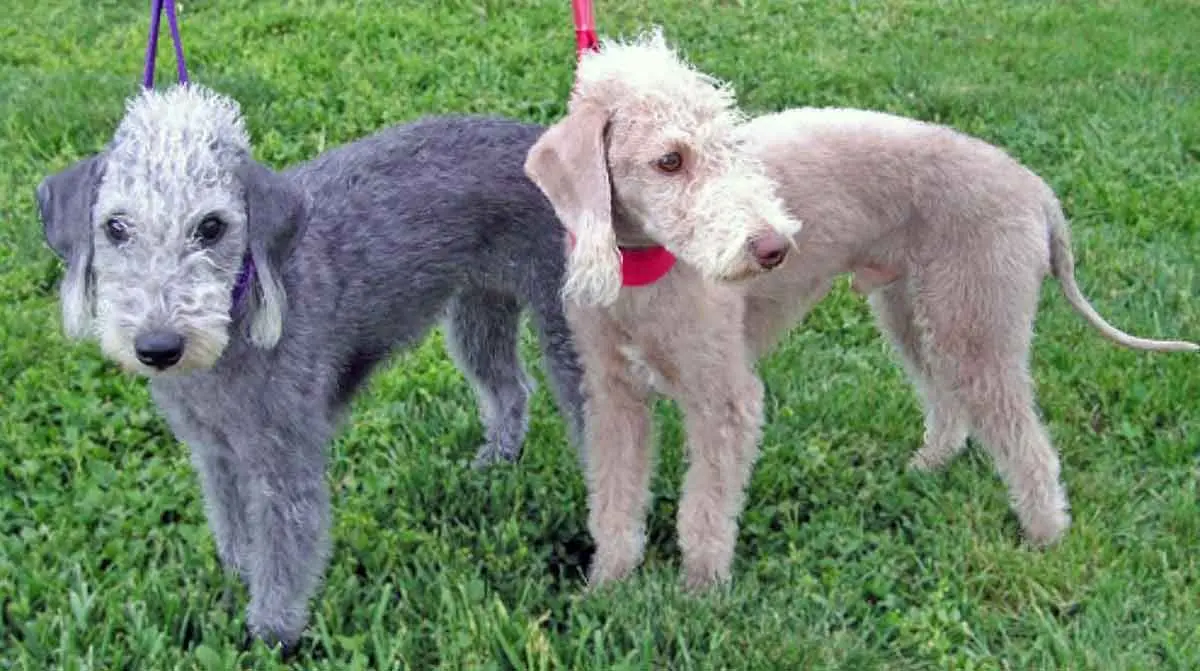
One of the Bedlington Terrier’s most striking features is its lamblike coat. Bedlington Terriers have curly coats that grow to medium length. In the official breed standard for the Bedlington Terrier, the feel of this coat is described as “A very distinctive mixture of hard and soft hair standing well out from the skin. Crisp to the touch, but not wiry.”
Though many look white, this is not one of the coat color options for this breed. Bedlington Terrier coats come in three different colors, as outlined below, and the coat can either be one solid color or have patches of tan. The American Kennel Club has defined the accepted breed standard coat colors as:
- Blue
- Sandy
- Liver
- Blue & Tan
- Liver & Tan
- Sandy & Tan
Texture aside, another feature that makes the Bedlington Terrier’s coat so fascinating is that it changes color. Bedlington Terriers are born with what is called a greying gene, which causes dark hair to turn light as it ages. This means that Bedlington Terrier’s coats get lighter as they get older, which is why most Bedlington Terrier dogs appear to be white.
8. The Bedlington Terrier is Hypoallergenic

As if the Bedlington Terrier’s coat wasn’t impressive enough already, it’s also considered hypoallergenic! Their beautiful coat is almost entirely shed-free, and it rarely gives off dander. This makes them wonderful pets for people with allergies, but don’t think that grooming them is easy, as it is not.
Though their hair might not fall out much, it sure does grow fast. Bedlington Terrier hair grows very quickly and to make sure the dog is comfortable needs clipping every two months. On top of helping the dog avoid rashes and skin conditions, clipping is also important because Bedlington Terriers’ hair will get matted and look very disheveled without it.
To maintain the “classic” Bedlington Terrier look, they need to be clipped in a very specific way. While owners can choose to groom the dog themselves, due to the texture of the coat, it is exceptionally difficult and will involve a steep learning curve. On top of the need for intense grooming, the breed also needs brushing and combing at least once a week.


